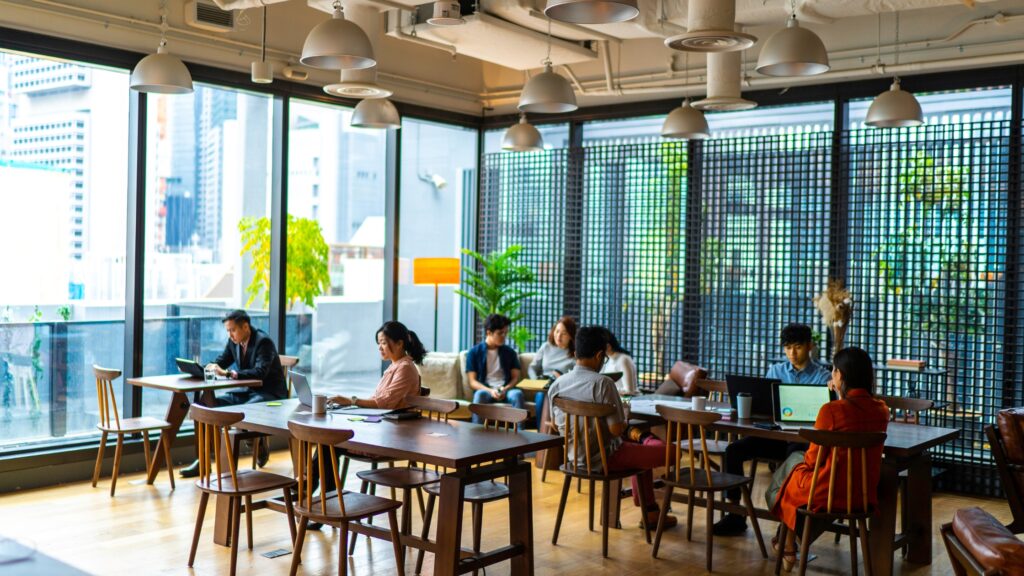Welcome to the Future of Living: co-living spaces
In recent years, the traditional landscape of renting has undergone a remarkable transformation. The Co-living spaces, once a niche concept, are now emerging as a modern and innovative approach to meeting the housing needs of today’s dynamic population. In this blog post, we’ll delve into the rise of co-living spaces, exploring the key factors driving their popularity, the benefits they offer, and why they represent a significant shift in the way we think about housing.
The Social Fabric of Co-Living
Building Communities, Not Just Houses
Co-living spaces are redefining the meaning of community. Unlike traditional rental setups, where tenants often live in isolation, co-living fosters a sense of belonging and connection. The shared spaces and communal activities create an environment where individuals from diverse backgrounds come together, forming bonds that extend beyond the walls of their rooms.
Furthermore, the architecture and design of co-living spaces play a crucial role in promoting interaction. Open-concept kitchens, comfortable lounges, and collaborative workspaces encourage residents to share moments and ideas. As a resident, you’re not just renting a room; you’re gaining access to a thriving social hub where friendships are forged and memories are created.
The Power of Shared Experiences
One of the defining features of co-living is the emphasis on shared experiences. From cooking classes to movie nights, co-living spaces provide opportunities for residents to engage in activities together, breaking down barriers and creating a vibrant social atmosphere. This sense of camaraderie not only enriches the living experience but also contributes to mental well-being.
Imagine coming home after a long day at work to find a group of fellow residents preparing a communal dinner. The laughter, the exchange of culinary tips, and the joy of sharing a meal create a unique sense of community. These shared experiences not only make co-living enjoyable but also foster a support system where residents can lean on each other during both good and challenging times.
The Practical Advantages of Co-Living
Cost-Efficiency Without Compromise
Affordability is a major factor driving the popularity of co-living spaces. By sharing living expenses, residents can enjoy high-quality amenities and services at a fraction of the cost compared to traditional rentals. Co-living makes city living more accessible to a broader demographic, catering to the needs of students, young professionals, and anyone seeking a cost-effective urban lifestyle.
Moreover, the financial benefits of co-living extend beyond the monthly rent. Shared utilities, internet bills, and even grocery costs contribute to significant savings. This financial freedom allows residents to allocate resources to personal and professional growth, creating a unique blend of affordability and opportunity.
Flexibility in Living Arrangements
Flexibility is a hallmark of co-living, allowing residents to adapt their living arrangements to match their evolving needs. Whether it’s a short-term stay or a more extended commitment, co-living spaces offer a range of lease options. This flexibility accommodates the transient nature of modern life, where career opportunities and personal circumstances can change rapidly.
The traditional leasing model often requires a long-term commitment, tying individuals to a specific location for an extended period. Co-living, on the other hand, understands the dynamic nature of today’s lifestyles. Month-to-month leases, the option to transfer to different locations within the co-living network, and the ability to easily scale up or down based on personal requirements provide a level of freedom that is unparalleled in conventional renting.
The Rise of Co-Living in Urban Landscapes
Addressing Urban Housing Challenges
As urban populations grow, so does the demand for innovative housing solutions. Co-living addresses the challenges of limited space and rising property costs in urban areas. By maximizing the efficient use of available space, co-living makes it possible for more people to enjoy the perks of city living without compromising on comfort or convenience.
The architectural ingenuity of co-living spaces ensures that every square foot is utilized effectively. From smart storage solutions to multifunctional furniture, these spaces are designed to optimize living conditions without sacrificing comfort. The result is a harmonious blend of functionality and aesthetics, providing residents with a home that not only meets their practical needs but also enhances their overall living experience.
Eco-Friendly Living Through Shared Spaces
Co-living spaces are not just economically viable; they are also environmentally friendly. Shared amenities and resources contribute to a more sustainable lifestyle, reducing the overall environmental impact. From shared kitchens that minimize food waste to communal workspaces that promote energy efficiency, co-living aligns with the growing trend of eco-conscious living.

The concept of shared spaces extends beyond social areas to include sustainable practices. Co-living communities often implement recycling programs, energy-efficient appliances, and green initiatives that promote a collectively responsible approach to the environment. By sharing resources and adopting eco-friendly practices, co-living spaces contribute to a more sustainable future, making them an attractive option for environmentally conscious individuals.
Co-Living and the Evolution of Work-Life Balance
Proximity to Work and Leisure
The location of co-living spaces is a key factor in their appeal. Many co-living facilities are strategically situated in the heart of urban centers, providing residents with easy access to both work and leisure activities. The proximity to workplaces reduces commute times, allowing residents to allocate more time to personal pursuits, socializing, or pursuing hobbies.
Living close to the city’s cultural hubs, entertainment districts, and recreational areas enhances the overall quality of life. Co-living spaces, recognizing the importance of a balanced lifestyle, often incorporate amenities such as fitness centers, rooftop gardens, and communal lounges, offering residents opportunities to unwind and connect without having to venture far from home.
Remote Work-Friendly Environments
The rise of remote work has further amplified the appeal of co-living spaces. Recognizing the need for flexible workspaces, many co-living communities provide dedicated areas for remote work, equipped with high-speed internet, ergonomic furniture, and a conducive environment for productivity. This adaptability to the changing nature of work aligns co-living with the evolving demands of the modern workforce.
Co-living spaces are not just residences; they are hubs for professional growth and collaboration. Networking events, workshops, and shared office spaces create opportunities for residents to connect with like-minded individuals, fostering a community that goes beyond shared living spaces. The ability to seamlessly transition between work and leisure within the same environment contributes to a holistic approach to life, supporting residents in achieving both their personal and professional goals.
Conclusion:
In conclusion, co-living spaces are not just a housing trend; they represent a fundamental shift in our approach to living. Beyond the economic advantages and innovative designs, co-living fosters a sense of community that transcends the traditional tenant-landlord relationship. By emphasizing shared experiences, promoting flexibility, and addressing urban challenges, co-living emerges as a dynamic solution for the modern lifestyle.
Choosing co-living is more than selecting a place to live; it’s opting for a lifestyle that values connection, affordability, and adaptability. As we navigate the ever-evolving landscape of housing, co-living stands as a beacon of modernity, offering a glimpse into a future where collaboration and sustainability redefine the concept of home. So, why settle for mere housing when you can embrace a vibrant, supportive community – welcome to the future of living.


